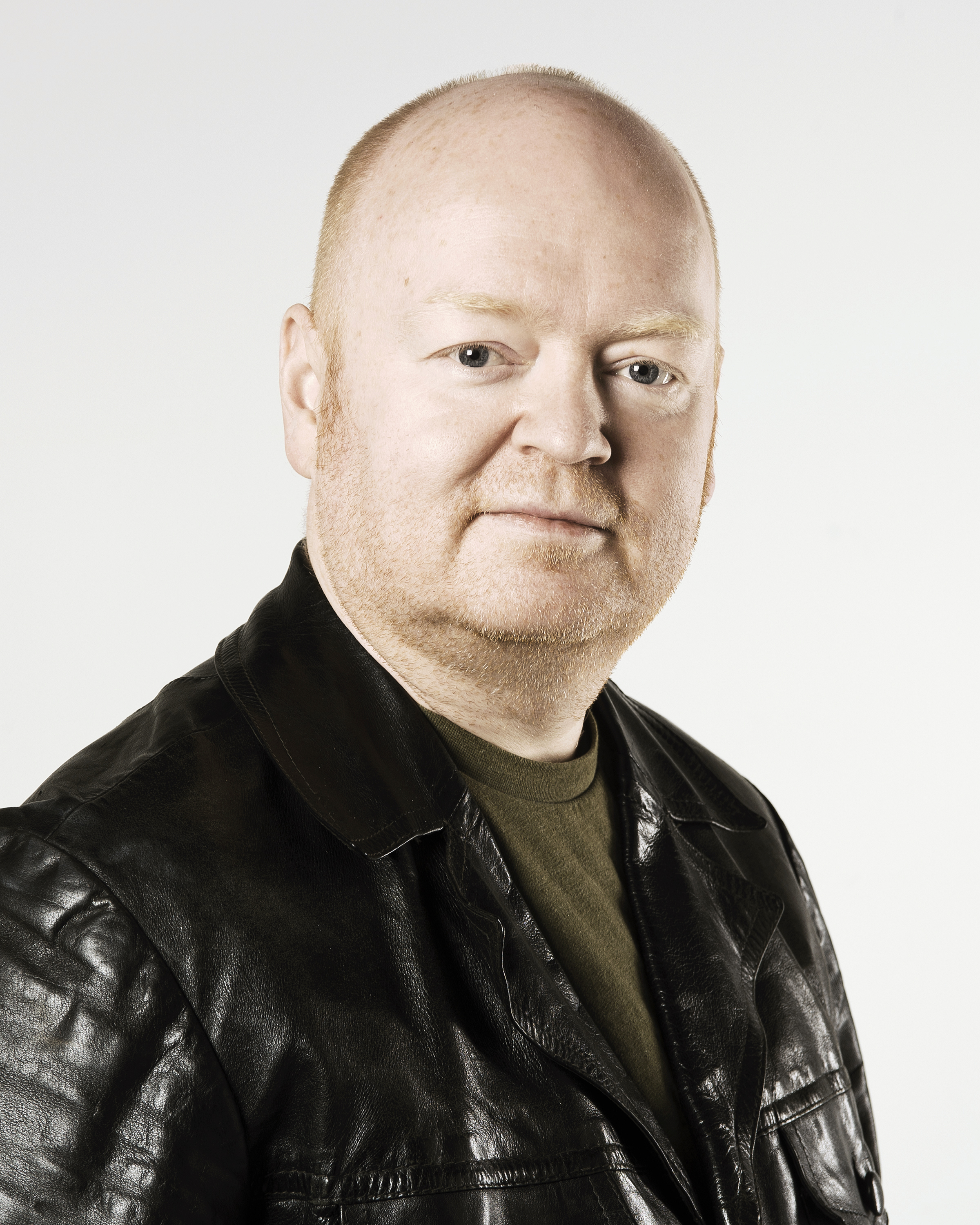Epiphone vs Gibson: what's the difference?
If all you know about Gibson and Epiphone is one is made in the USA, the other in Asia, we've got a guide that'll bring you right up to speed and help you find the right one for you...
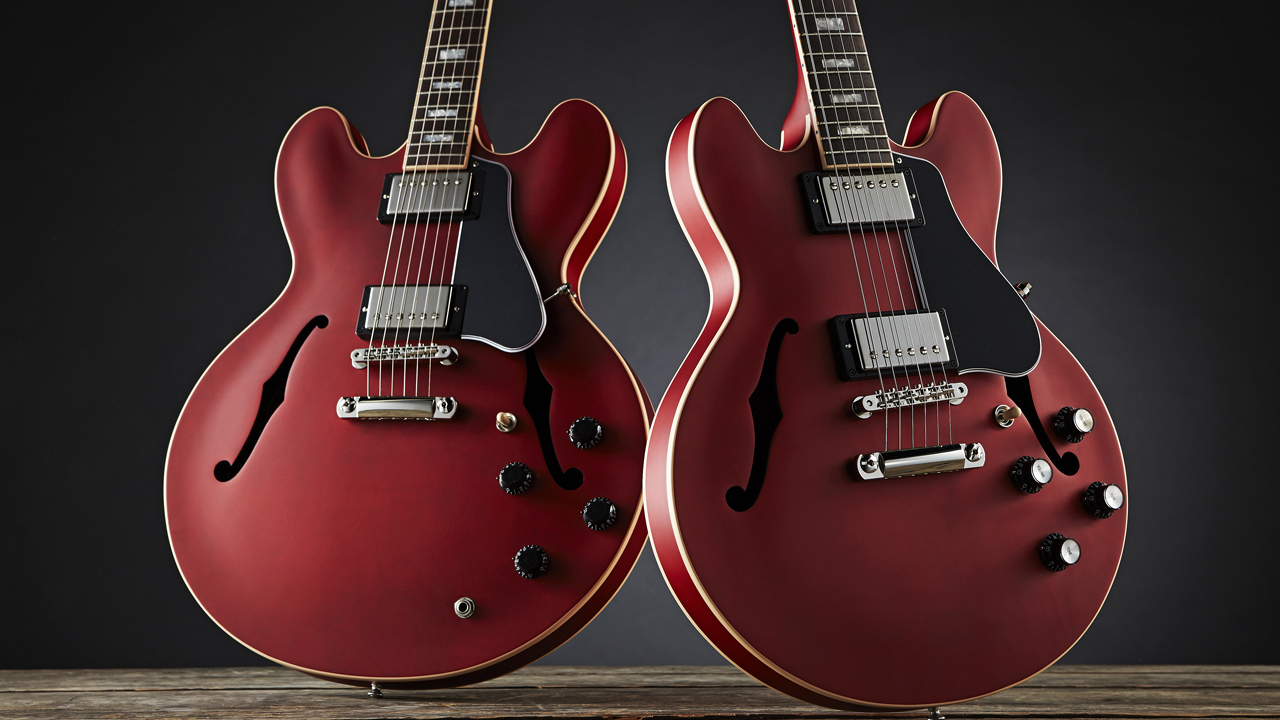
Once upon a time, you bought an Epiphone guitar simply because you couldn't afford a Gibson. That's fact. As of 2022 however, a revamp of the Epiphone lineup means that these affordable heroes can no longer be dismissed as the poor cousins of "the real thing" and the Gibson vs Epiphone debate got a little more interesting. Vintage spec, pimped pickups and eyeball-seducing aesthetics mean that even the most modest budget can bag a guitar with serious tone, feel, and curb appeal.
It's all good news over at parent company Gibson USA too. After bouncing back following a period of uncertainty and poor management, the brand is putting out some of its best ever instruments. The message? No matter how much you have to splash out, there's a Gibson or Epiphone with your name on it. Let's help you find out which one that is...
Read more
- Our pick of the best Gibson Les Pauls
- And the best Epiphone Les Pauls for smaller budgets
Epiphone Vs Gibson: The history

These days we regard Epiphone electric guitars as the entry point into the Gibson catalogue. What you might not know is that Epiphone and Gibson were once arch-rivals. Actually, make that 'archtop' rivals. In the '30s, '40s and '50s, both brands produced big hollowbody archtop guitars for the numerous jazz players of the era. That rivalry came to an end in 1957 when Gibson purchased Epiphone.
In the late '50s, and throughout the '60s, Gibson produced a series of Epiphone-branded electrics that are now considered some of the greatest guitars of all time. Model names like Casino, Riviera, Coronet, Wilshire and Crestwood are enough to make vintage geeks drool at the mouth. These guitars possess tonal characteristics and playability that's driven up their resale value in the past couple of decades.
Sadly, Gibson betrayed that legacy by switching production of Epiphone to Japan in the 1970s. Don't be fooled. While a '70s Epiphone can technically be described as "vintage", spouting forth terms like "classic" is a step too far. Bolt-on necks. Poor quality wiring. Cheap hardware. There wasn't much going on there to be proud of. Of course, it's worth noting that Gibson didn't produce its best work throughout that decade either.
Over the past 40 years, Gibson and Epiphone have hit their fair share of peaks and troughs in terms of quality. The good news is we're currently experiencing a peak.
Epiphone Vs Gibson: The players
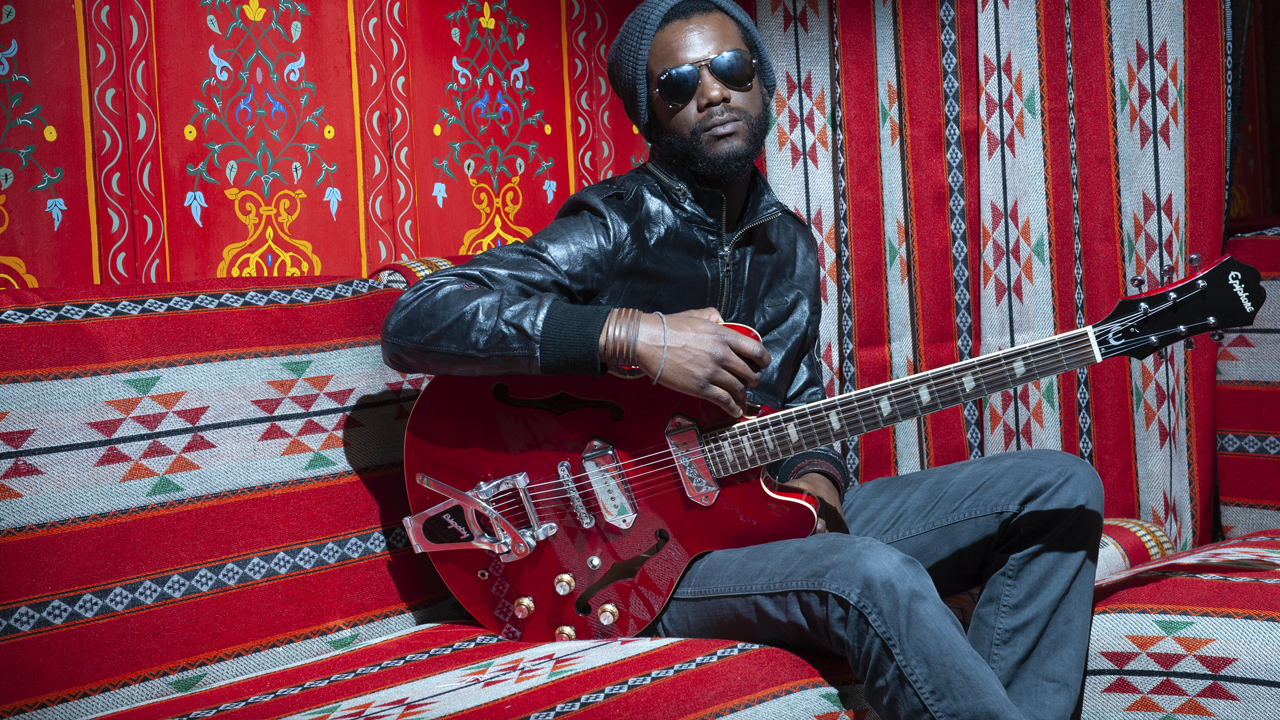
You want brand ambassadors? The Gibson Les Paul Standard has been clutched by Led Zeppelin's Jimmy Page, top hat model Slash, Peter Green of Fleetwood Mac, Bluesbreakers-era Eric Clapton, Dire Straits' legend Mark Knopfler, hirsute hombre Billy Gibbons of ZZ Top, and thousands more. The SG is synonymous with rock pioneer Sister Rosetta Tharpe, Mod god Paul Weller, Robbie Krieger of The Doors and Angus Young of AC/DC, natch. The Firebird is blues icon Johnny Winter, dead Rolling Stone Brian Jones and Joe Bonamassa. The ES semi-solid thinline guitars are Cream era Clapton, Alvin Lee of Ten Years After and BB King and his infamous squeeze "Lucille".
Get The Pick Newsletter
All the latest guitar news, interviews, lessons, reviews, deals and more, direct to your inbox!
And Epiphone? The Beatles played Casinos in the mid-60s. As a result, a 60s original costs a bloody fortune. We call that the "Beatle Tax". What really put the brand back in business in more 'recent' times was the conspicuous use of Epiphone by Noel Gallagher and Paul "Bonehead" Arthurs in the early days of Oasis.
Epiphone Vs Gibson: The tones
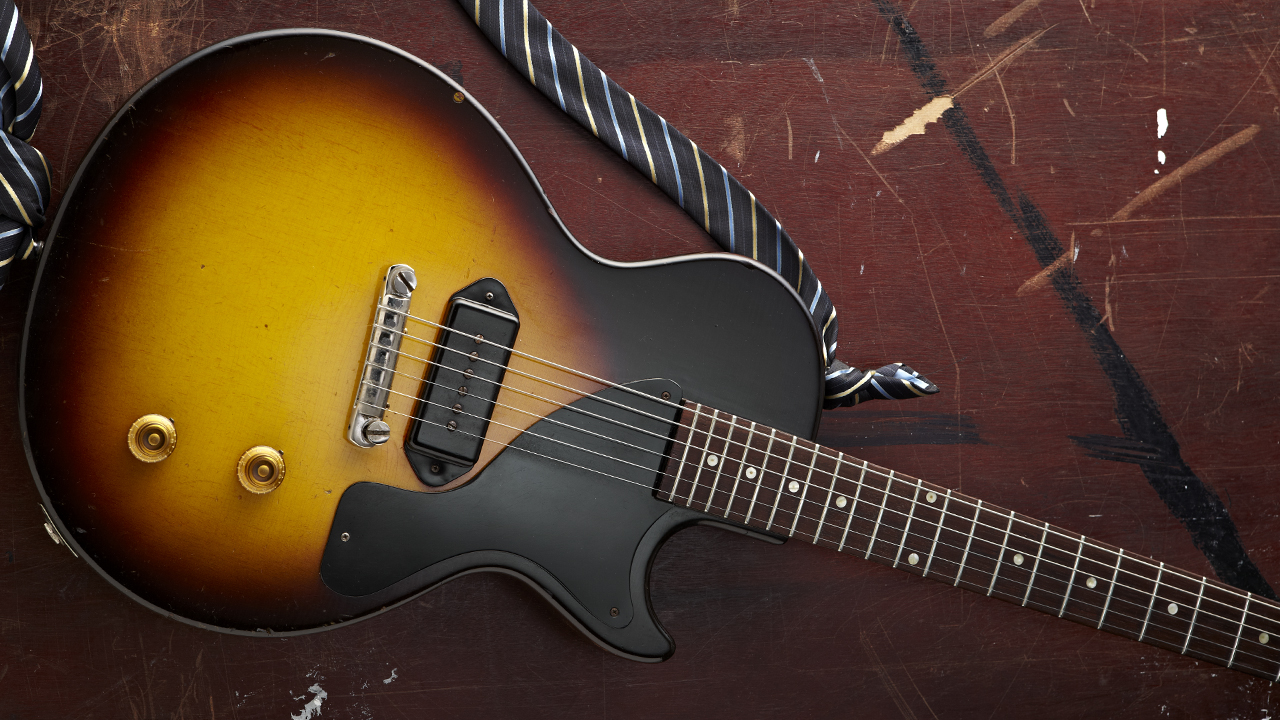
Between 1952 and 1962 Gibson launched the Les Paul Standard, Junior and Special, the ES-335, Flying V and Explorer; not to mention a new double-cut Les Paul design in the early 60s that was eventually rechristened the SG. As pretty as all of these guitars are, it's the tones they produced that make them special.
Gibson guitars, and their Epiphone equivalents, come with either single coil P90 pickups or double coil humbuckers. As a rule of thumb, P90s produce a fat tone with good note separation when you engage your overdrive or distortion. They make a great punk sound. Think Johnny Thunders of the New York Dolls and Green Day's Billie Joe Armstrong. The downside to P90s is they can produce a lot of background hum.
Humbuckers, as the name suggests, produce way less background noise but that comes at the expense of clarity. Neck pickups in particular can sound a bit 'woolly'. That said, some of the greatest rock and blues tones of all time have been fuelled by 'buckers so it hasn't put cats like Jimmy Page and Slash off their game.
Epiphone Vs Gibson: Key spec
The big difference between Epiphone and Gibson guitars is the finish. Gibson models are coated in a vintage style nitrocellulose lacquer. This can be satin or gloss. Epiphone guitars come shipped in a tougher poly finish. What's the difference? Nitro is usually applied in a thinner coat than poly. It also ages in a different way. Nitrocellulose reacts to stuff like the environment, oils from your skin, and light exposure. It looks cool. Many players also believe it allows the guitar to "breathe" for better tone.
Poly finishes are harder wearing. A ten-year-old poly Les Paul can look like new if it's looked after. These guitars usually come with chrome hardware which maintains its gleam over the years. The nickel hardware fitted to nitro-coated Gibson guitars will dull over time. Again, this looks agreeable when working in cahoots with a time-worn nitro lacquer.
You'll also encounter different fingerboard woods on Gibson and Epiphone guitars. The former will generally feature rosewood 'boards. Custom Shop reissue Les Paul Customs come spec'd with ebony 'boards. Other Customs have synthetic Richlite fingerboards, an eco substitute for ebony.
Many Epiphone guitars now feature Indian Laurel 'boards, a sustainable alternative to rosewood that you'll find on many manufacturers' sub-$1,000 guitar spec sheets.
Epiphone Vs Gibson: Buying advice
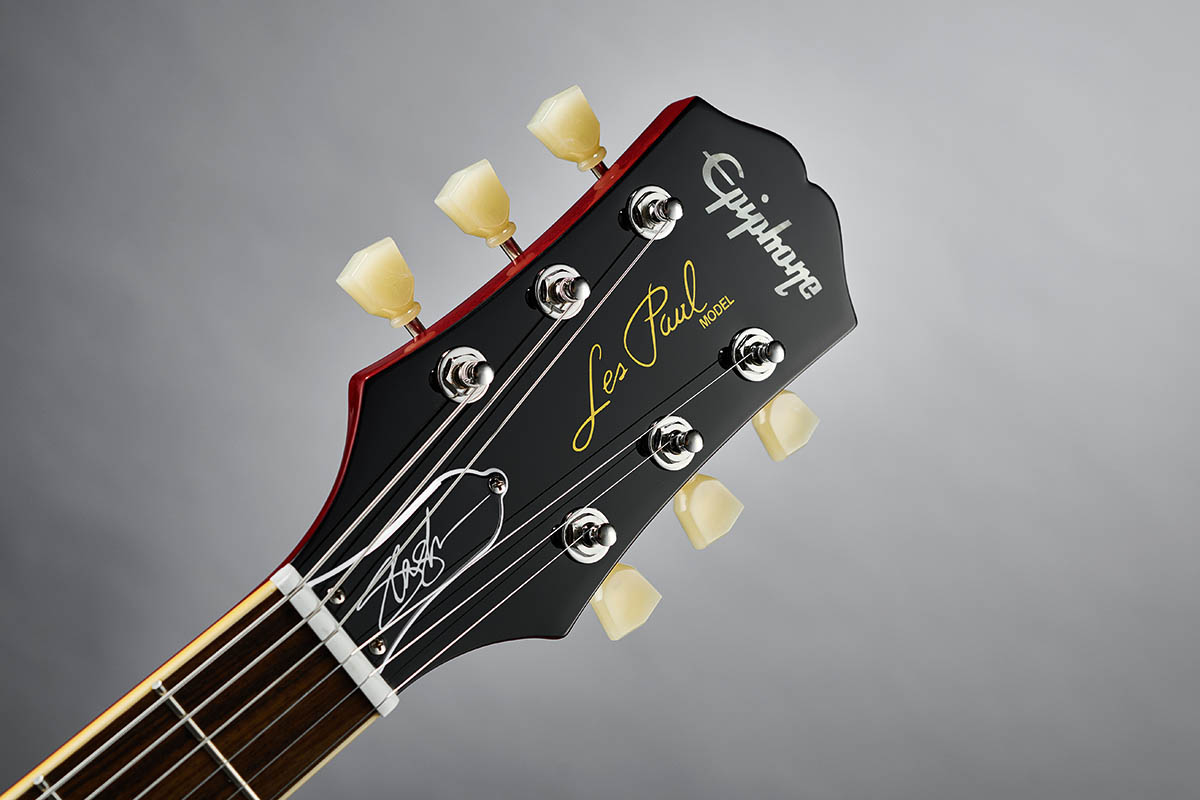
Don't judge a guitar by its price tag. Guitars are magical things. Even something cheap can produce a great tone. If you have less than a grand to invest, you might prefer a higher spec Epiphone for the price of an entry-level Gibson. Get your hands on a few examples of both and compare the sounds and playability.
A great deal of the Gibson and Epiphone models you find will have the "60s SlimTaper" neck shape. This popular neck profile might not suit everyone. If you prefer something with a bit more meat then consider a 50s spec model or any guitar with a "rounded" profile neck.
Compare weight too. SGs tend to be light, around seven pounds. A Les Paul often sits between eight and nine pounds, especially if it's weight-relieved. Non weight relieved Custom Shop reissue Les Paul Customs can run between nine and eleven pounds, or more. We're not fat shaming here. If you're going to be hanging your guitar from a strap at a gig or rehearsal, all night, weight can be an important factor.
Finally, it's worth mentioning that the 24.75" scale length of a Gibson and Epiphone - the distance between the bridge and top nut - can allow you to fit heavier strings than you might think. A set of .010 or .011 gauge strings will feel lighter and easier to bend on a Gibson/Epiphone than a longer scale (25.5") Fender. Don't be afraid to try something heavier than you're used to. You might find you prefer the tone of thicker strings, and tuning stability can be better too.
Epiphone Vs Gibson: The gear
Still not sure whether to drop your budget on an Epiphone or save for a Gibson? We've picked out a handful of our favorite models available today to help you narrow down your search.
The Epiphones
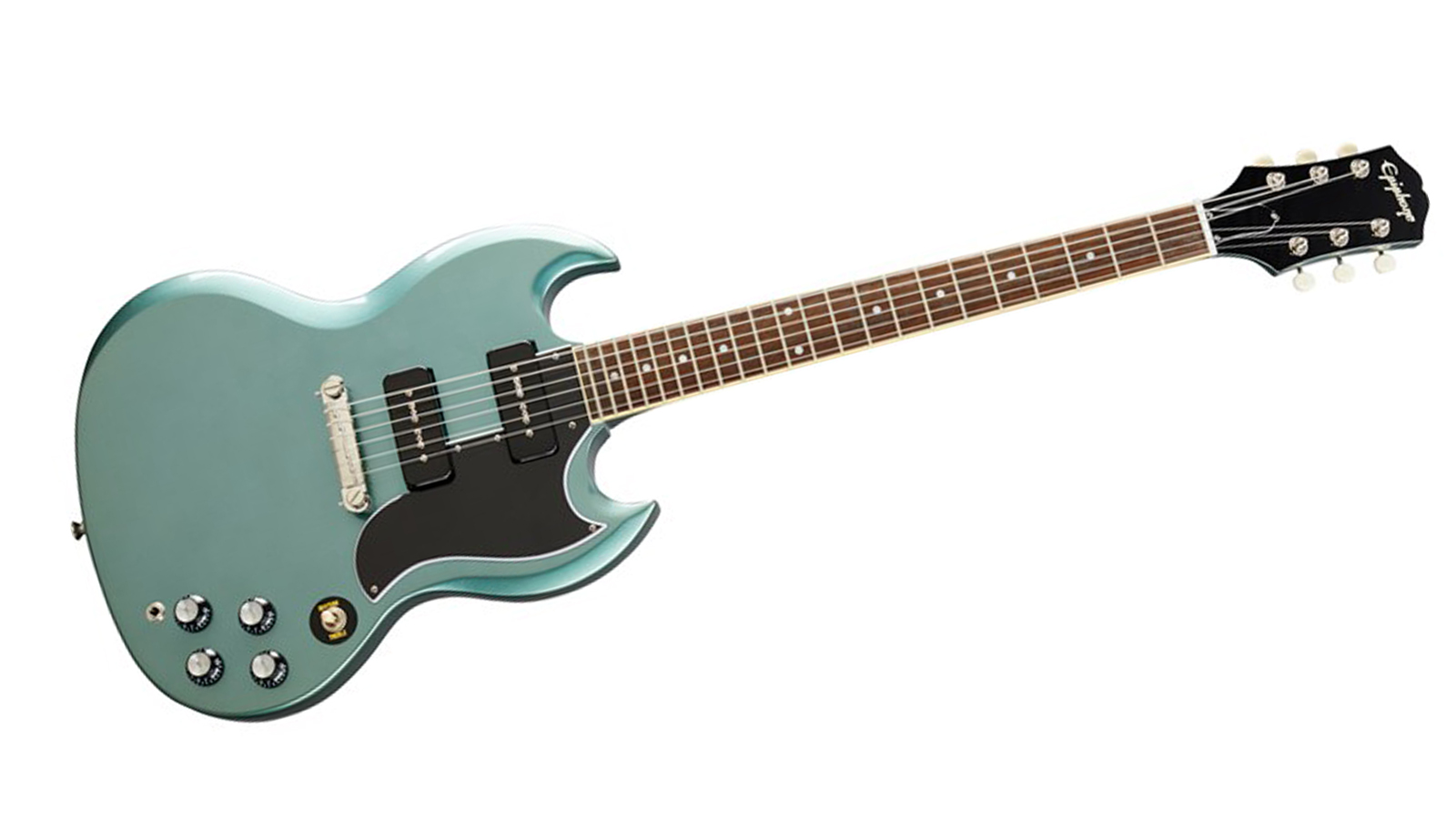
1. Epiphone Original SG Special
Our expert review:
Specifications
Reasons to buy
Reasons to avoid
Don't confuse this guitar with the entry-level bolt-on neck Epiphone SG. The Original SG is a welcome recreation of one of the coolest electric guitars ever made, the P90-loaded Gibson SG Special. In the 60s, Gibson offered humbucker-spec'd Standard and Custom SGs, plus a single P90 model called the Junior, and a twin P90 guitar called, you guessed it, the Special. The latter model has become a rock icon due to Pete Townshend of The Who.
The Original lives up to its name thanks to a lightweight mahogany body, slim mahogany neck, and a combined Lightning Bolt bridge/tailpiece. Lightning Bolt refers to the preset intonation stamped on the top of the bridge. Fat sounding P90s complete the tonal feast.
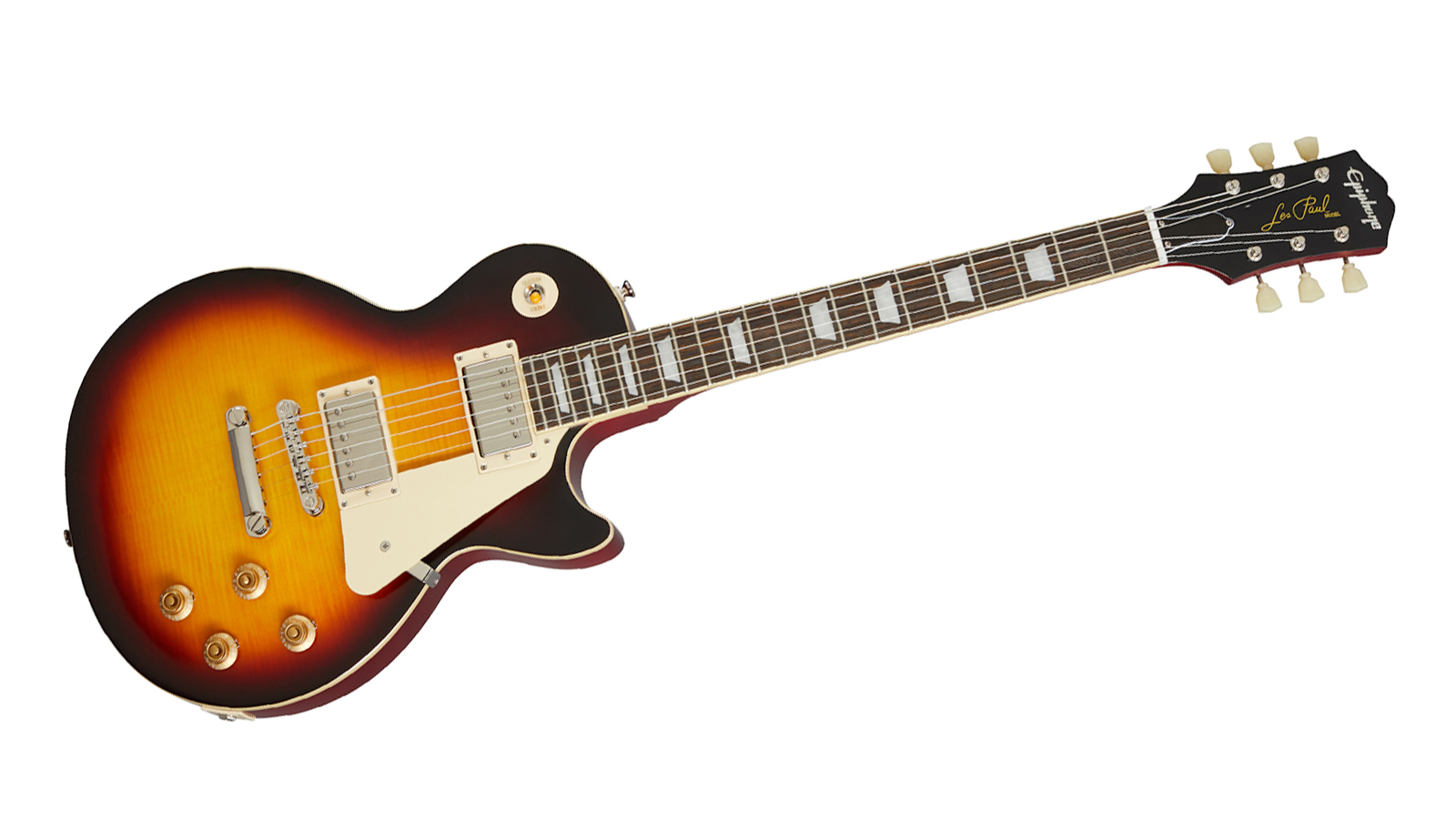
2. Epiphone 1959 Les Paul Standard
Our expert review:
Specifications
Reasons to buy
Reasons to avoid
This classy looking LP is inspired by possibly the most coveted guitar of all time - the 1959 Gibson Les Paul Standard. Now, while an original “burst” would set you back several hundred thousand dollars, this top of the range Epiphone will get you close to that iconic look and sound at a fraction of the price.
As you’d expect, this guitar sticks to the beloved formula we all know and love. Of course, the body is predominantly mahogany with a pretty flame maple cap to add some eye candy, while the neck sports the comfortable ‘59 profile that many players believe is the best Gibson has ever produced.
Bringing the power is a set of genuine Gibson BurstBucker pickups, meaning this guitar is another step closer to sounding like the real deal.
In other good news, you also get an Epiphone hardshell case to keep your new guitar safe when travelling from venue to venue.
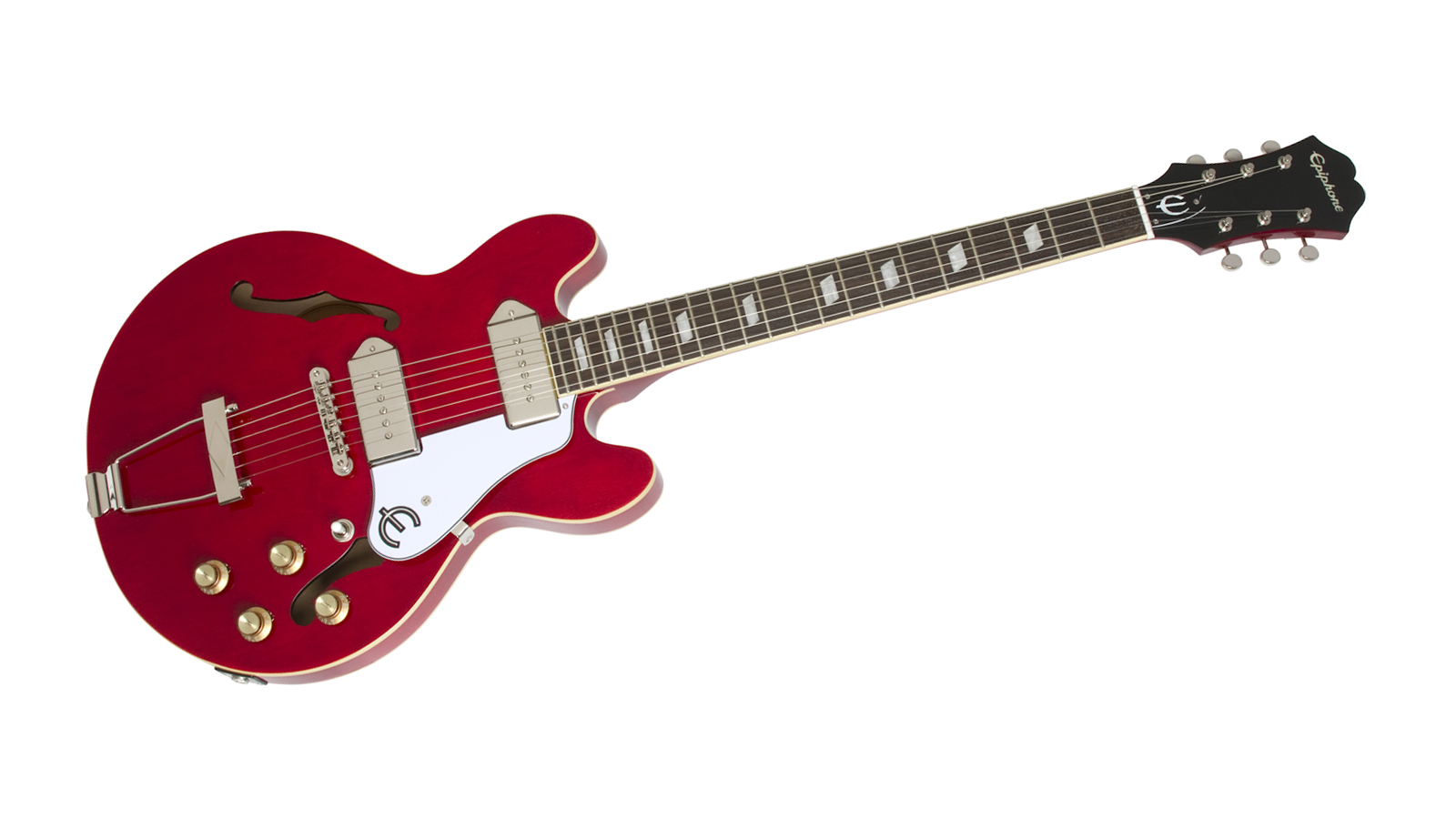
3. Epiphone Casino Coupe
Our expert review:
Specifications
Reasons to buy
Reasons to avoid
It was actually Beatle bassist Paul McCartney who bought the Fab Four's first Epiphone Casino in 1964. He used his '62 model to play the solos on Drive My Car and Taxman. John Lennon and George Harrison bought their Casinos new in 1965. Lennon would use his almost exclusively for the rest of his time with the band.
The modern Casino Coupe incorporates the features of the original guitars into a slightly scaled down body, the same dimensions as Gibson's ES-339 models. Like any classic Casino, the Coupe has a hollow body and a pair of P90 single coil pickups. Good enough for The Beatles, Paul Weller, Gary Clark Jr... good enough for you.

4. Epiphone Original Firebird
Our expert review:
Specifications
Reasons to buy
Reasons to avoid
It's no secret Fender was kicking Gibson's ass in the late 50s. Leo Fender had the smart idea to offer his guitars in the same DuPont paint codes as the cars rolling out of the motor factories in Detroit. In the early 60s, Gibson went one better, hiring retired car designer Ray Dietrich to sketch a new guitar shape. His elegant Firebird was launched in 1963.
The new Original Firebird has all the mojo of Ray's original design. Most notable is the same sustain promoting thru-body design that attracted legends like bluesman Johnny Winter and Rolling Stone Brian Jones. Look closely and you'll see that the neck runs all the way to the bottom of the body. The classic shape is completed by a pair of mahogany wings, glued one on each side.
The Gibsons

1. Gibson SG Standard
Our expert review:
Specifications
Reasons to buy
Reasons to avoid
The SG Standard is the biggest selling Gibson guitar of all time. That's not just because Angus Young loves 'em, although that doesn't hurt. The SG Standard is a tone machine. It's lightweight, sustains like a chatterbox on speed and plays host to a pair of sweet sounding humbuckers.
The best thing Gibson could've done with the latest SG Standard is not mess with the formula. Job done. That beautifully sculpted twin Devil horn body is pure 60s classic. Ditto the all mahogany body and neck construction and rosewood 'board. It's that combination that's made players from Angus to Weller very happy indeed.
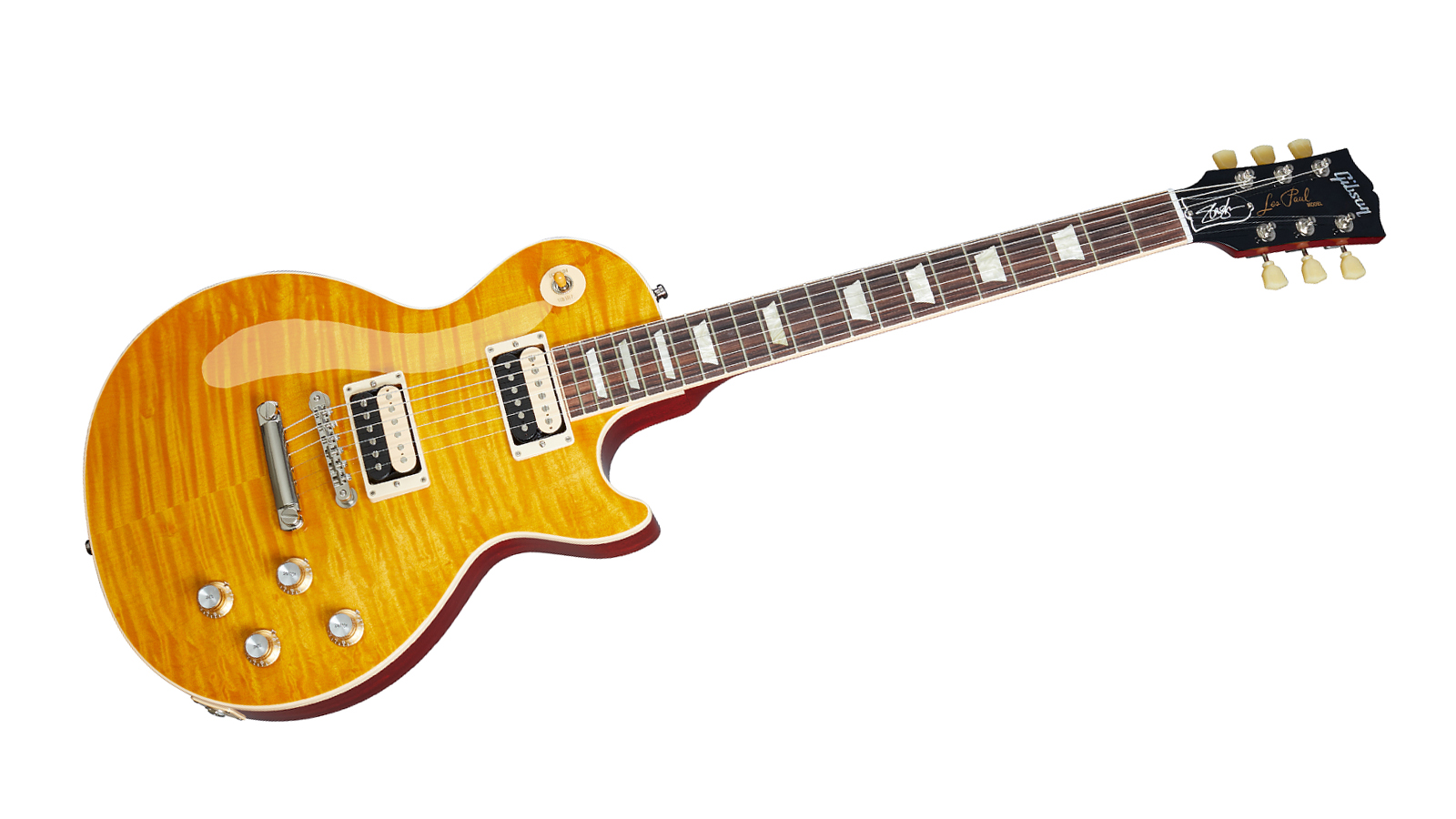
2. Gibson Slash Les Paul Standard
Our expert review:
Specifications
Reasons to buy
Reasons to avoid
The fact that Slash didn't use an actual Gibson Les Paul during the recording of Guns'N'Roses' Appetite For Destruction, well, that's a wormhole you can wander down at your leisure. This new Slash LP is all Gibson and comes spec'd by the cat in the top hat himself.
Those of you who prefer something meaty in the palm of your hand should enjoy the girth of this guitar's 50s profile neck. This guitar is all about the chunk; the body isn't weight relieved. The November Burst lacquer has a satin look. The Appetite Burst is a gloss nitro finish that tributes the guitar Slash actually played back in the day. The Alnico-II pups produce classic rock tones just as you might expect. This guitar is more about good taste than extreme firepower.

3. Gibson Modern Collection ES-335
Our expert review:
Specifications
Reasons to buy
Reasons to avoid
The Gibson ES-335 is a work of genius. First launched in 1958, this beautiful guitar looks like a hollowbody with all the screeching feedback production that specification inspires. In fact, the 335 has a solid block run through the body to reduce unwanted shrieks. It's a simple but effective idea that many other manufacturers have copied.
There are a bunch of ES-335 models in the current Gibson catalogue, including the super tasty Chris Cornell Signature. This satin finish Modern Collection offers the looks, feel and sound of a classic ES-335 at a slightly more affordable price. Spec includes a maple/poplar/maple laminated body and a rounded C shape mahogany neck.
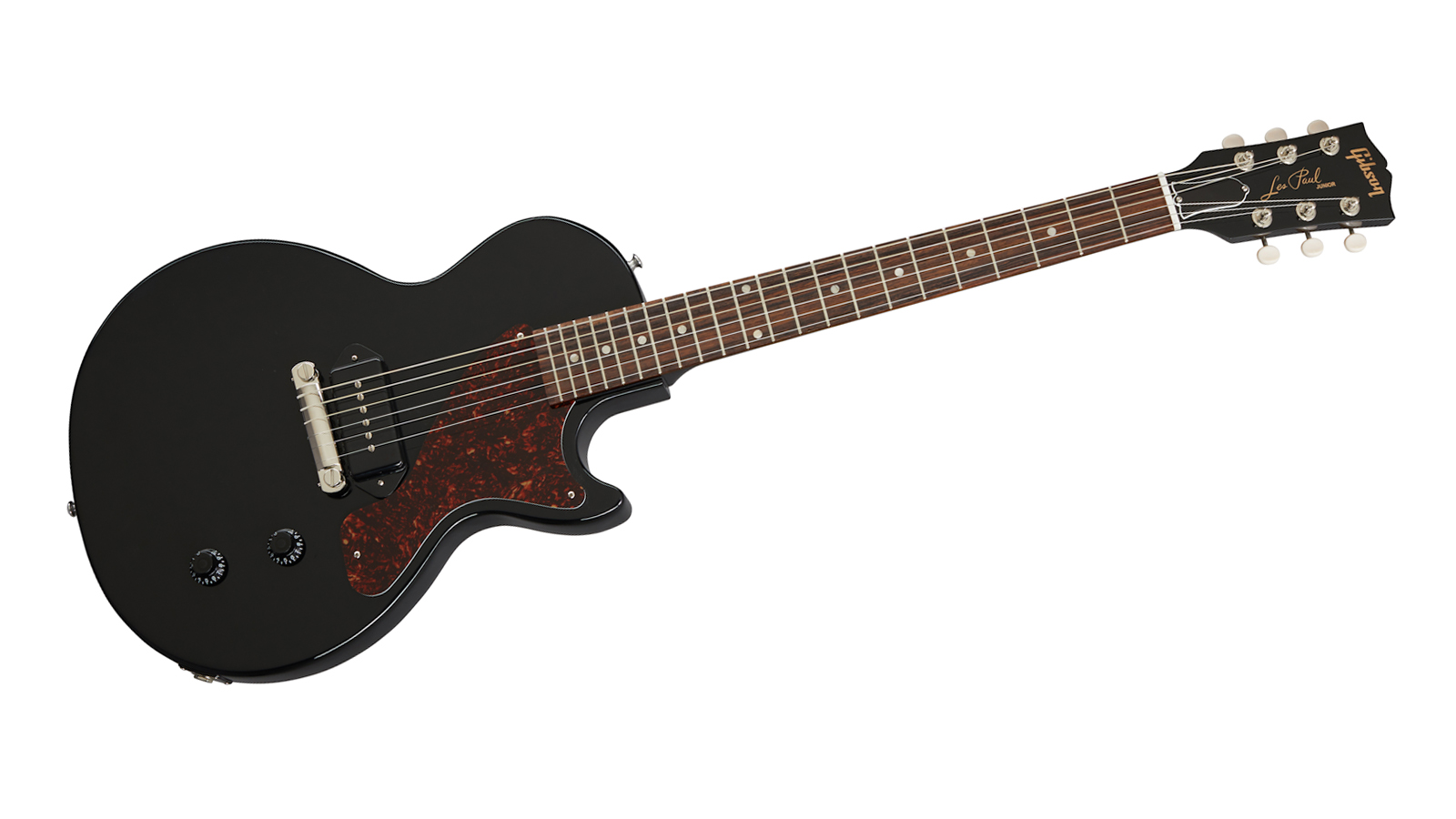
4. Gibson Les Paul Junior
Our expert review:
Specifications
Reasons to buy
Reasons to avoid
At this point, this single-pickup, single-cutaway guitar is a punk rock legend, with many players such as Green Day frontman, Billie Joe Armstrong, relying on this straightforward guitar to achieve some of the greatest tones of all time.
The Les Paul Junior may have started life as a stripped-back student model, but it has gone on to have quite the cult following, with many players falling in love with its aggressive mid focused bark.
The new Original Collection Gibson Les Paul Junior does a fantastic job at capturing everything we love about this late 50s axe. From the stellar Dog-Ear P90 to the rounded 50s neck, vintage wraparound bridge and glorious gloss nitrocellulose lacquer, this simple Gibson really has it all.
Related buyer's guides
- Check out the best cheap electric guitars under $500
- Bigger budget? Try the best electric guitars under $1,000
- Only the best good enough? Explore the best electric guitars under $2,000
- Complete your rig with the best guitar amps under $1,000
- Our pick of the best practice amps for improving at home
- Give you playing a boost with the best online guitar lessons
Ed Mitchell was Reviews Editor on Total Guitar magazine from 2003, and his guitar-modding column, Ed’s Shed, appeared in print on both sides of the Atlantic (in both Total Guitar and Guitar World magazines). He was the Editor of The Blues Magazine from 2012-16, and a contributor to Guitarist, Classic Rock and Louder. He died in October 2022, aged 52. Between them, the websites Guitar World, Louder and MusicRadar host over 400 of his articles – among them interviews with Billy Gibbons, Paul Weller, Brian Setzer, profiles on Roy Buchanan, Duane Allman and Peter Green, a joint interview with Jimmy Page and Jack White, and dozens of guitar reviews – and that’s just the ones that made it online.
“Finely tuned instruments with effortless playability and one of the best vibratos there is”: PRS Standard 24 Satin and S2 Standard 24 Satin review
Epiphone brings one of Gibson’s most desirable one-off finishes to the masses with Guitar Center-exclusive Widow Les Paul – but it’s been given a twist
